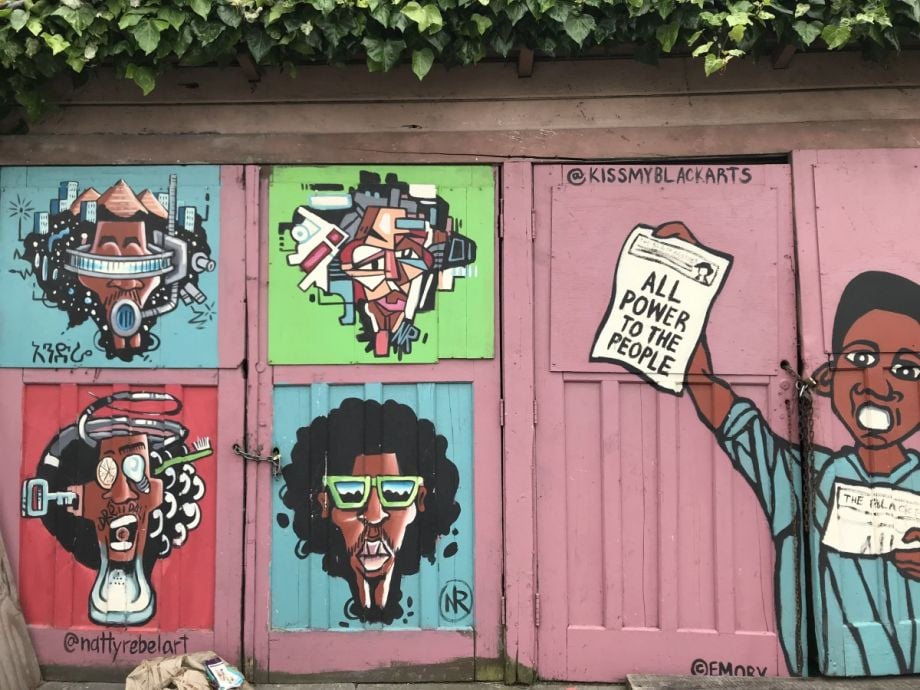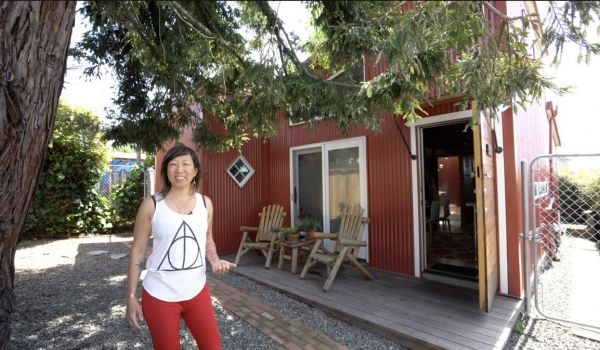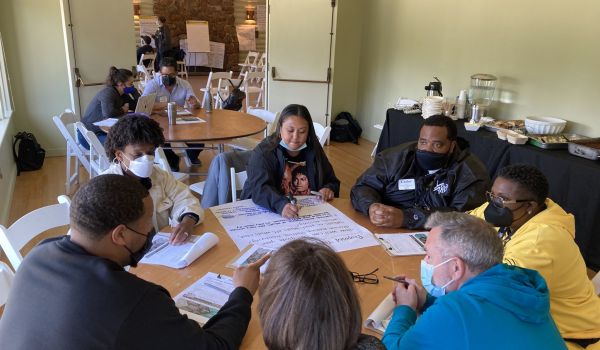Valerie Red-Horse Mohl has been an oddball for a long time.
Of Cherokee ancestry, Red-Horse Mohl was the first Native American to start an investment bank, Red-Horse Financial Group, based on Wall Street. Over 25 years in the investment world, she helped indigenous communities raise $3 billion in capital for affordable housing and economic development projects on tribal lands. She also started one of the first native-owned production companies in Hollywood.
In 2018 she moved to the Bay Area, to stay close to her youngest daughter who was starting college at Stanford. She found her way into the world of impact investing — investments that offer positive social or environmental returns in addition to financial returns. Despite its lofty intentions, the impact investing world is still largely white and male.
“I enjoyed that work, pairing investors with businesses focusing on climate or racial justice, but every investment was so small, maybe $50,000 or so,” Red-Horse Mohl says. “And many people of color and many women still don’t have access to this closed circle of capital, especially venture capital and private equity.”
In 2020, after a yearlong search, the East Bay Community Foundation recruited Red-Horse Mohl as its new chief financial officer, extending her oddball streak. The world of philanthropy is still overwhelmingly white, especially the subset of philanthropy on the finance side of things. As chief financial officer, Red-Horse Mohl oversees the community foundation’s investment portfolio of around $840 million — a pot of money that typically grows every year as donations come in faster than the community foundation gives it away in grants.
Right now, most of those dollars are invested in stocks and bonds with goals for financial returns, while just a small portion are invested with some kind of filter for environmental or social impact. Red-Horse Mohl’s big goal in her new job is to move all those dollars into investments that align with the East Bay Community Foundation’s grantmaking mission, which is “to eliminate structural barriers, advance racial equity, and transform political, social, and economic outcomes for all who call the East Bay home.”
“I love it because when we think about community foundations, we’re moving away from the old model which is just ‘put your money here and we’ll direct your money to your favorite charity,’” Red-Horse Mohl says.
About 80 percent of the dollars in East Bay Community Foundation’s investment portfolio are held in what’s known as donor-advised funds, or DAFs. An individual, a family or a corporation can set up a DAF, get tax benefits right away for putting money into the DAF, and later those funds get granted out to eligible charities in accordance with the DAF donor’s wishes. Some DAF donors are very involved in selecting grant recipients, some are very hands off — some have willed away assets into DAFs after they’ve passed away.
DAFs give out a lot of money, but most donors put more money into their DAF each year than they give away. In 2019, DAFs distributed $27 billion in grants to charitable organizations, but donors contributed $38 billion more into their DAFs, according to the National Philanthropic Trust, which puts out an annual DAF Report. DAFs also grow through investment portfolio earnings.
Some criticize DAFs as being primarily tax havens for the rich, because though wealthy people can put resources into a fund and reap the tax benefits immediately, the money is not immediately passed along to a charity, and could in fact sit in the fund indefinitely.
Community foundations sponsor 83,185 DAF accounts with charitable assets totaling $40.22 billion, according to the National Philanthropic Trust. The Silicon Valley Community Foundation is the largest community foundation in the world thanks to its DAFs, which hold $10 billion in assets. Still, community foundations don’t hold a candle to the wider world of DAFs; there are about 873,000 DAFs with a total value of $142 billion, and Fidelity Charitable Trust, a part of Fidelity Investments, is the largest single recipient of charitable donations per year.
Since they aren’t affiliated with investment firms, community foundations outsource the management of DAF assets to rosters of asset management firms. That’s where hiring someone like Red-Horse Mohl as chief financial officer — to select these firms — can make a difference.
A lot of the selection process is a matter of social networks. Since white-male led firms manage more than 99 percent of all professionally managed assets in the U.S., according to a study from the U.S. Government Accountability Office, the CFO is most likely to know other white men.
But Red-Horse Mohl can use her industry experience and connections to begin overhauling East Bay Community Foundation’s asset manager roster so that it is more representative of the diverse East Bay region, and so the investments they make collectively can start to reflect the same mission as the community foundation’s grantmaking portfolio. For instance, Red-Horse Mohl talks about bringing in Nia Impact Capital, led by Kristin Hull, onto East Bay Community Foundation’s roster of asset managers.
“[Hull] has a PhD and she worked for 12 years with another firm and now her own firm for about five years, but in some circles of the old Wall Street thinking she is considered an emerging manager because she’s managing under a billion dollars and has less than 10 years of track record with her current fund, but I think that’s kind of ridiculous,” says Red-Horse Mohl.
It won’t happen overnight. Red-Horse Mohl doesn’t have absolute power over which firms East Bay Community Foundation works with. There is a process, with checks and balances — first there’s the consultant that the foundation works with to vet asset management firms, then there’s an investment committee that gets to weigh in.
Not every investment will have the same impact in terms of mission, but the idea is to build a roster of asset management firms that look for mission impact first, then financial return.
“What I have found is philanthropy in general and community foundations especially are slow to change,” says Red-Horse Mohl. “I think there’s also an opportunity to cultivate a new crop of investment consultants…but it’s like moving the Titanic.”
The East Bay Community Foundation might be one of the only community foundations that is changing how it manages its investment portfolio in this way, but it isn’t the only foundation doing so. Over the past few years, a growing number of independent foundations — those established by wealthy individuals by setting aside a portion of their wealth — are also starting to invest their assets in ways that align more closely to their grantmaking missions, or make their asset manager rosters more diverse.
That shift is in part a response to critics pointing out that wealth is something that entire communities create, even if economic institutions tend to concentrate it into the hands of a select few who happen to be predominantly white men. In Red-Horse Mohl’s view, since community foundations don’t have a mandate to maximize financial returns, they’re uniquely positioned to cultivate asset management firms that can someday serve larger clients and slowly change the face of who controls wealth and how they operate.
“Community foundations and foundations in general have to do this,” says Red-Horse Mohl. “Very conservative funds like pension funds, they’ll be the last to move, but we can take a little bit of risk.”
This article is part of The Bottom Line, a series exploring scalable solutions for problems related to affordability, inclusive economic growth and access to capital. Click here to subscribe to our Bottom Line newsletter.

Oscar is Next City's senior economic justice correspondent. He previously served as Next City’s editor from 2018-2019, and was a Next City Equitable Cities Fellow from 2015-2016. Since 2011, Oscar has covered community development finance, community banking, impact investing, economic development, housing and more for media outlets such as Shelterforce, B Magazine, Impact Alpha and Fast Company.
Follow Oscar .(JavaScript must be enabled to view this email address)


















